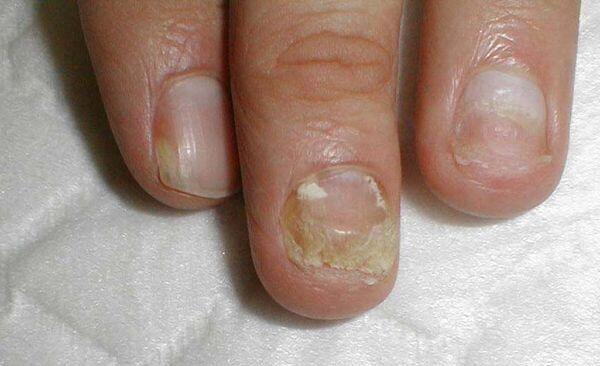Definition of Tinea Unguium
The term tinea unguium is used to describe dermatophyte infections of the fingernails or toenails.

Geographical distribution of Tinea Unguium
The condition is worldwide in distribution.
Causal organisms
Fungal infection of the nails (onychomycosis) may be caused by a number of dermatophytes as well as by a number of other moulds and Candida species. There is wide geographical and racial variation in the causative agents, but in the UK 85-90% of nail infections are due to dermatophytes and about 5% are due to non-dermatophyte moulds. The dermatophytes most commonly implicated are anthropophilic species, such as T. mentagrophytes var. interdigitate and T. rubrum. Their prevalence differs from one geographical region to another. Zoophilic species, such as T. erinacei, are seldom isolated and usually only from fingernails.
Tinea unguium is most prevalent between the ages of 20 and 50, but the actual incidence of the condition is difficult to assess. This is because many reports do not distinguish between dermatophytosis and other forms of onychomycosis, or between infections of the finger and toenails. It has been estimated that tinea unguium occurs in about 3% of adults in the UK.
Management of Tinea Unguium
Tinea unguium is a difficult condition to treat. Localized distal nail disease can be treated with topical antifungals, such as amorolfine or tioconazole. Amorolfine should be applied at 1-week intervals, while tioconazole must be applied each morning and evening. Amorolfine treatment must be continued for at least 6 months for success with fingernails and 9-12 months for toenails.
The allylamine terbinafine is now the treatment of choice for patients with dermatophytosis of the fingernails or toenails. Oral treatment with 250 mg/day for between 6 weeks and 3 months is often sufficient to cure a fingernail infection, but toenails may require treatment for 3 months or longer. Treatment with oral terbinafine will also clear associated cutaneous lesions without the need for additional topical treatment.
Itraconazole is another effective treatment for dermatophyte nail infection. This drug persists in nail for at least 6 months and pulsed treatment (in which a week of treatment is alternated with three weeks without treatment) has given encouraging results. Two pulses of treatment with 400 mg/ day are recommended for success with fingernails and three pulses of treatment (or more) for toenail infections. Itraconazole is also available for continuous treatment and a dosage of 200 mg/day for 3 months is the most appropriate for severe nail disease.
With griseofulvin, up to 90% of fingernail infections can be cured in 4-8 months, but its low cure rate of 40% in some toenail infections means that it is now less appropriate than terbinafine or itraconazole.


